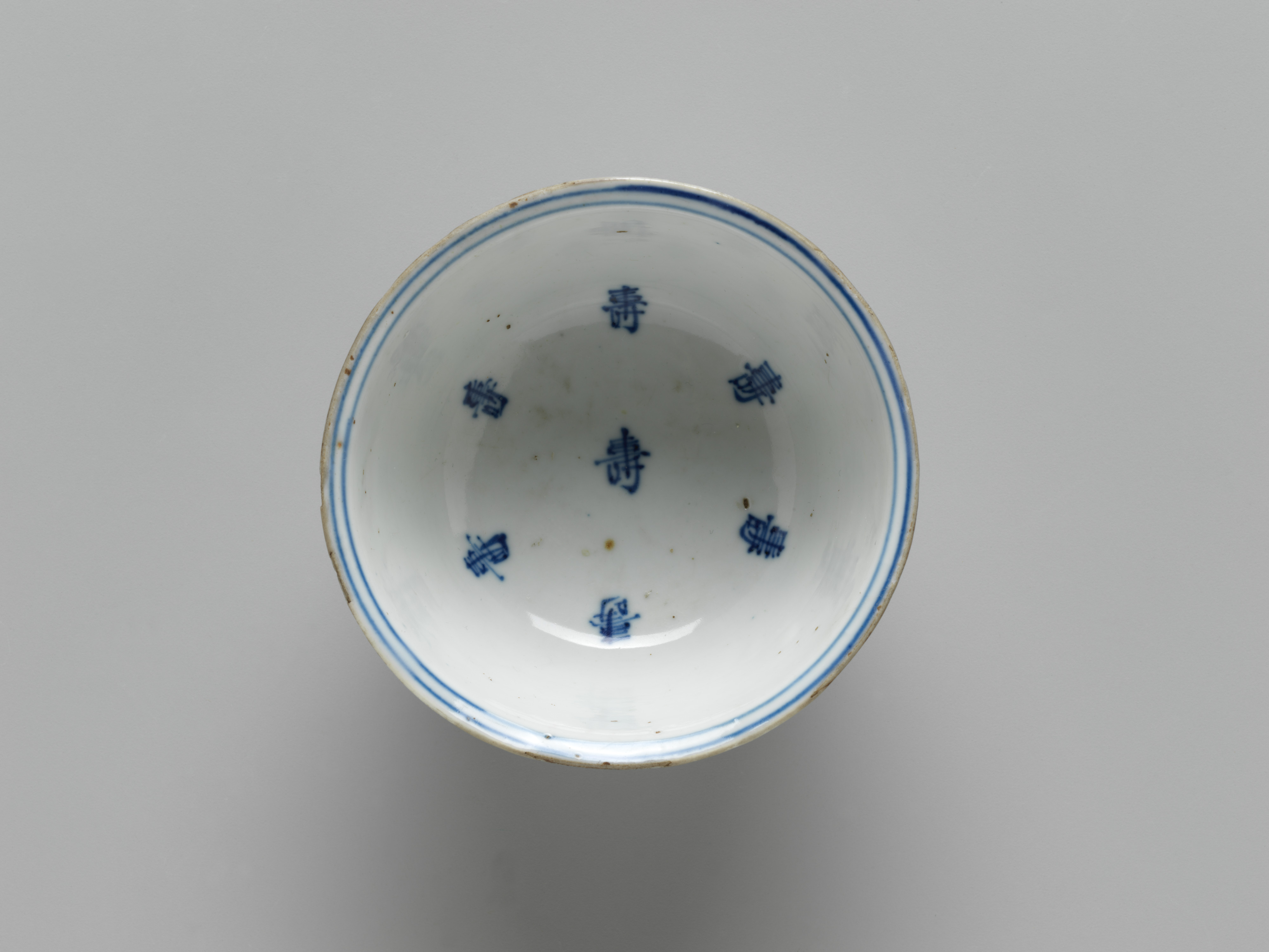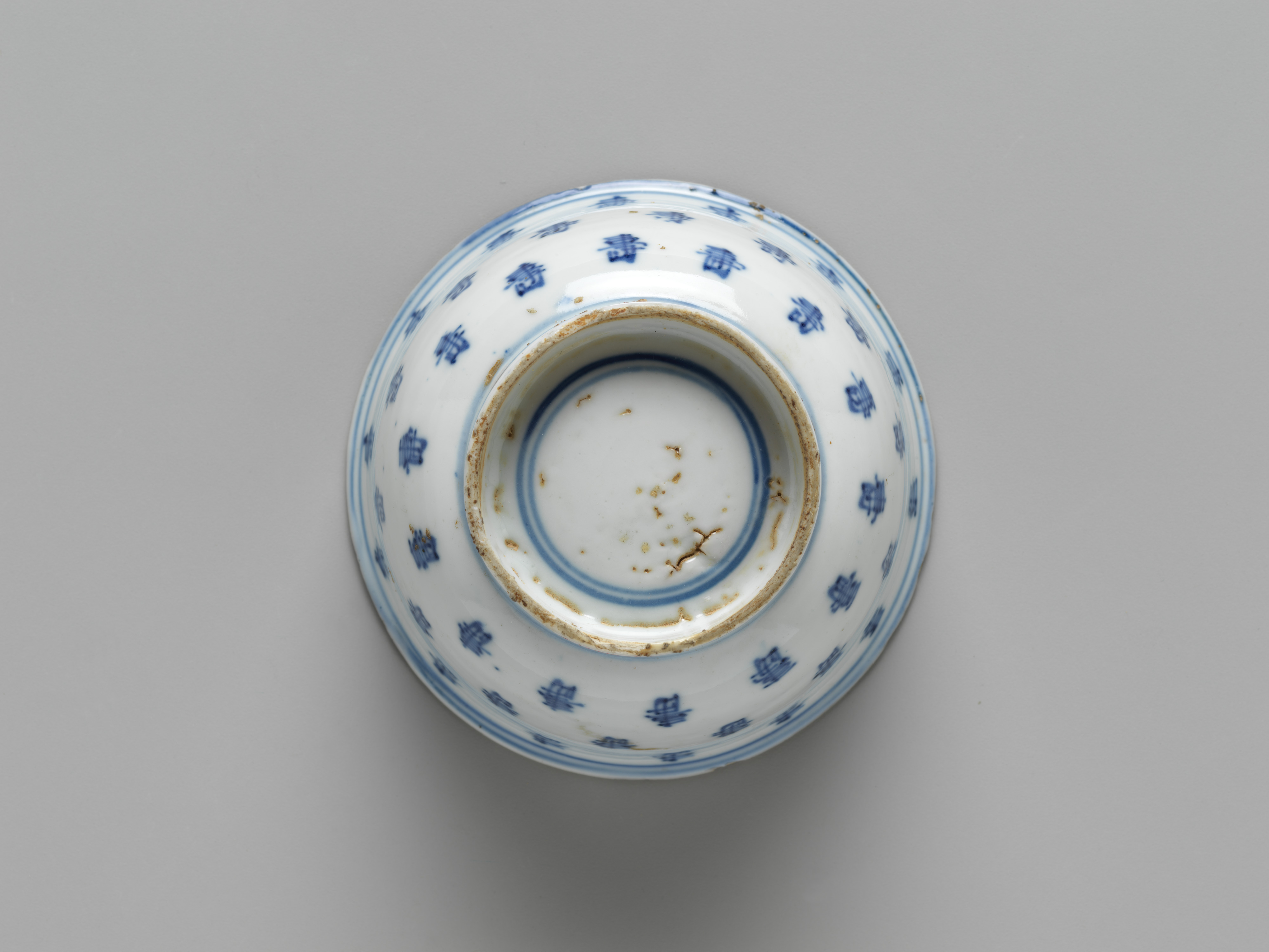Cup with character for longevity (shou)
Not on view
Cups like this one reflect the seventeenth-century Japanese taste for Chinese porcelain. They also reflect a change in Japanese tea culture brought about by Ōbaku monks from China, who arrived with a new form of tea that was popular on the continent. Unlike traditional powdered tea, whisked in deep bowls, the new tea (called sencha in Japan) was brewed by steeping whole, unfermented leaves in pots and served in small cups. In size, form, and aesthetic, this cup would have been perfectly suited to Japanese sencha practice.
This image cannot be enlarged, viewed at full screen, or downloaded.
This artwork is meant to be viewed from right to left. Scroll left to view more.




